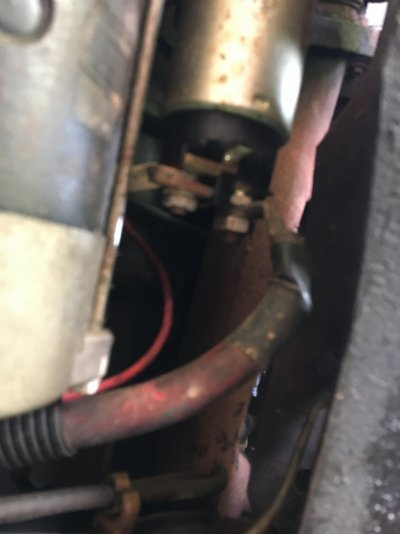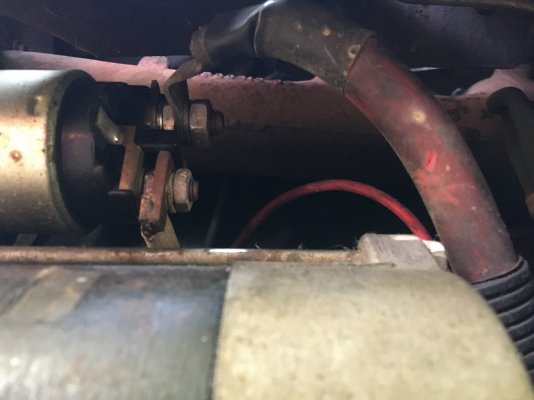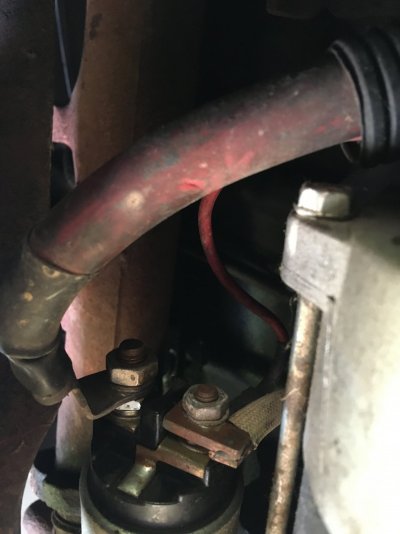WrightWay
Registered User
Appreciate all the input, I'll try to recap this thread.
Truck had 380K miles with good maintenance and likely little DIY work. Owner (friend) passed. It then sat for 5-6 years in a barn before I got it in 2012 - Truck was a pro, myself a novice. In the 60K miles I have put on it, I have replaced batteries, starter once, starter relay once, key lock cyclinder once, gps, gp controller once and wired the clutch switch to work. No other wiring changes in starting system. All starting issues were 'minor' and easy to fix.
In last month it has had intermittent no start/no crank issues, work well then all of sudden no crank, after running well and starting all spring. I would have full dash lights and gps but no starter engagement. Wait awhile, do nothing, it may start...and then start 20 more times before an issue.
I changed the starter relay, then I had no dash lights or gps, and no crank. Changed ignition switch and got dash lights and gps back but no starter. Big Bart has been walking me thru some testing.
12V on wire from battery to top post starter relay and relay clicks and starter engages and will start. Put multimeter (yes I have one) on wire from ignition switch to relay (top terminal) and reading is very low. Ignition switch not powering up starter relay? Getting 12V at each battery with multimeter
Things that appear to work are:
Both batteries
Glow plugs and controller
Starter relay
Starter
Wires from relay to starter
Let me know if I'm thinking right but appears that next step is to take this ignition switch back off, with wires plugged in the back, and move pin manually to see if it starts.
If so I need a different ignition switch- (salvage yard) or Motocraft, the armature between key cylinder and switch is worn, or need new key lock cylinder. ??
Let me know if I'm thinking straight, Ive gotten a bit confused several times on this thread.
I'm hoping not to have to try to get to armature between lock cylinder and ignition switch as that looked like no fun.
Truck had 380K miles with good maintenance and likely little DIY work. Owner (friend) passed. It then sat for 5-6 years in a barn before I got it in 2012 - Truck was a pro, myself a novice. In the 60K miles I have put on it, I have replaced batteries, starter once, starter relay once, key lock cyclinder once, gps, gp controller once and wired the clutch switch to work. No other wiring changes in starting system. All starting issues were 'minor' and easy to fix.
In last month it has had intermittent no start/no crank issues, work well then all of sudden no crank, after running well and starting all spring. I would have full dash lights and gps but no starter engagement. Wait awhile, do nothing, it may start...and then start 20 more times before an issue.
I changed the starter relay, then I had no dash lights or gps, and no crank. Changed ignition switch and got dash lights and gps back but no starter. Big Bart has been walking me thru some testing.
12V on wire from battery to top post starter relay and relay clicks and starter engages and will start. Put multimeter (yes I have one) on wire from ignition switch to relay (top terminal) and reading is very low. Ignition switch not powering up starter relay? Getting 12V at each battery with multimeter
Things that appear to work are:
Both batteries
Glow plugs and controller
Starter relay
Starter
Wires from relay to starter
Let me know if I'm thinking right but appears that next step is to take this ignition switch back off, with wires plugged in the back, and move pin manually to see if it starts.
If so I need a different ignition switch- (salvage yard) or Motocraft, the armature between key cylinder and switch is worn, or need new key lock cylinder. ??
Let me know if I'm thinking straight, Ive gotten a bit confused several times on this thread.
I'm hoping not to have to try to get to armature between lock cylinder and ignition switch as that looked like no fun.



